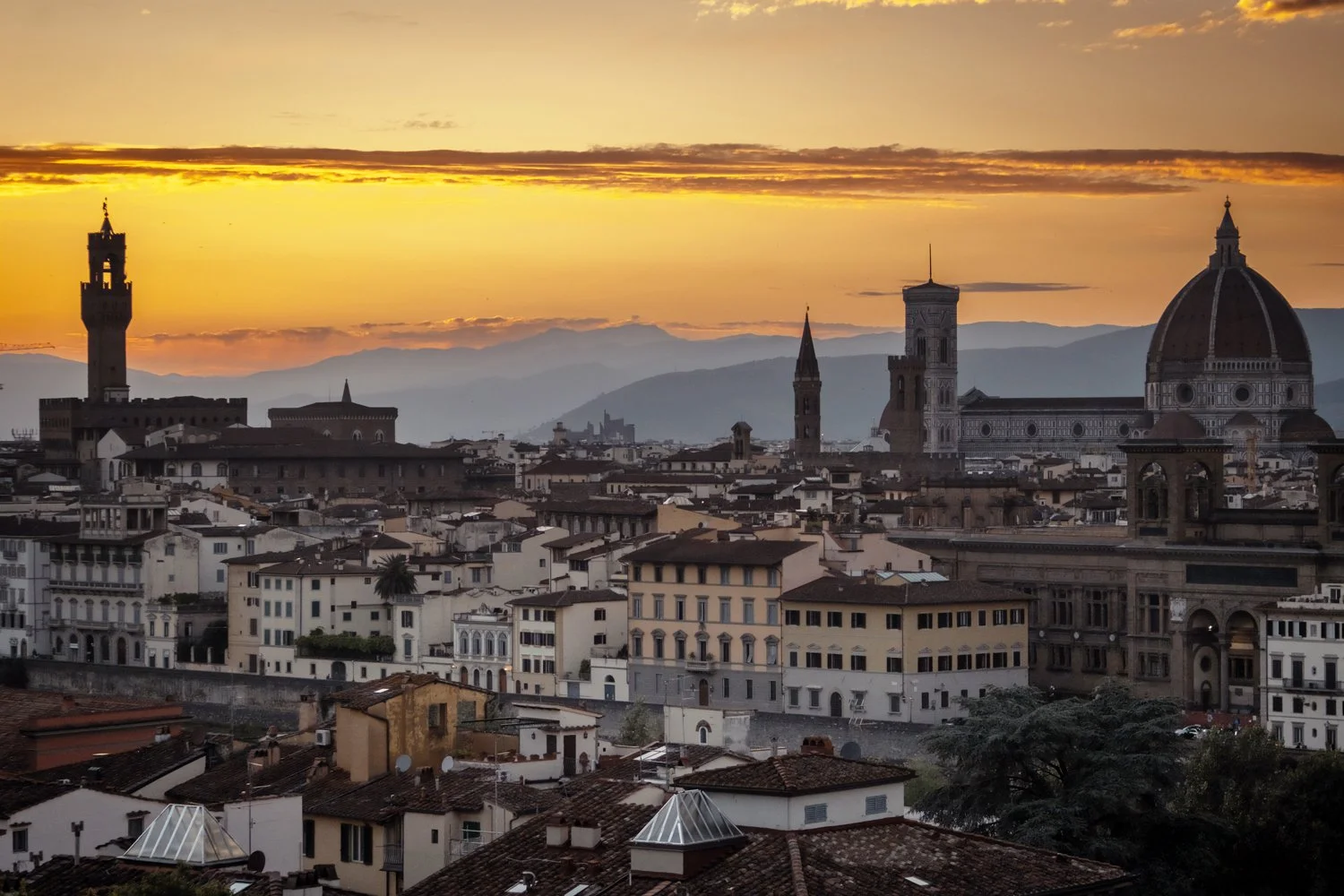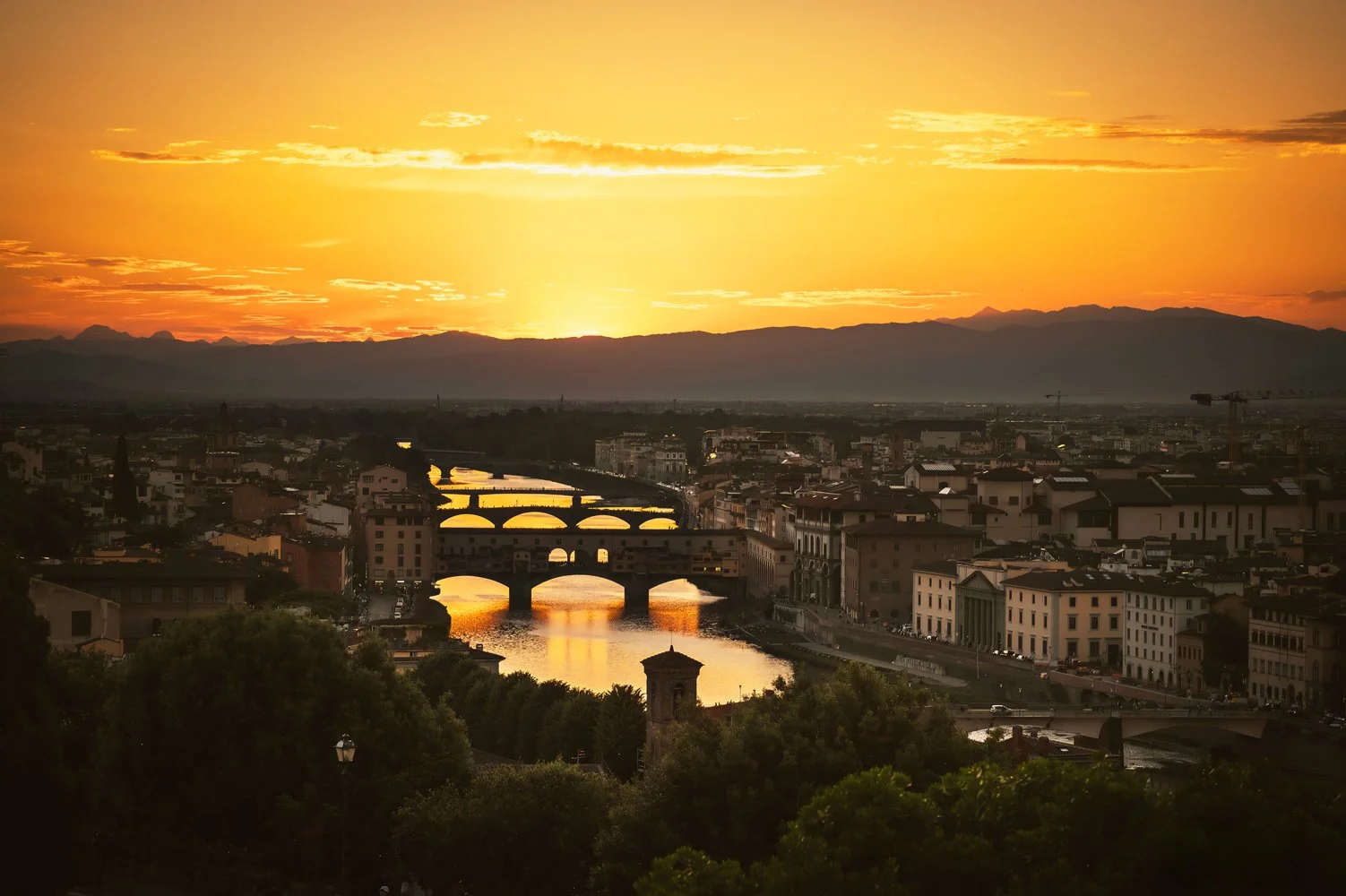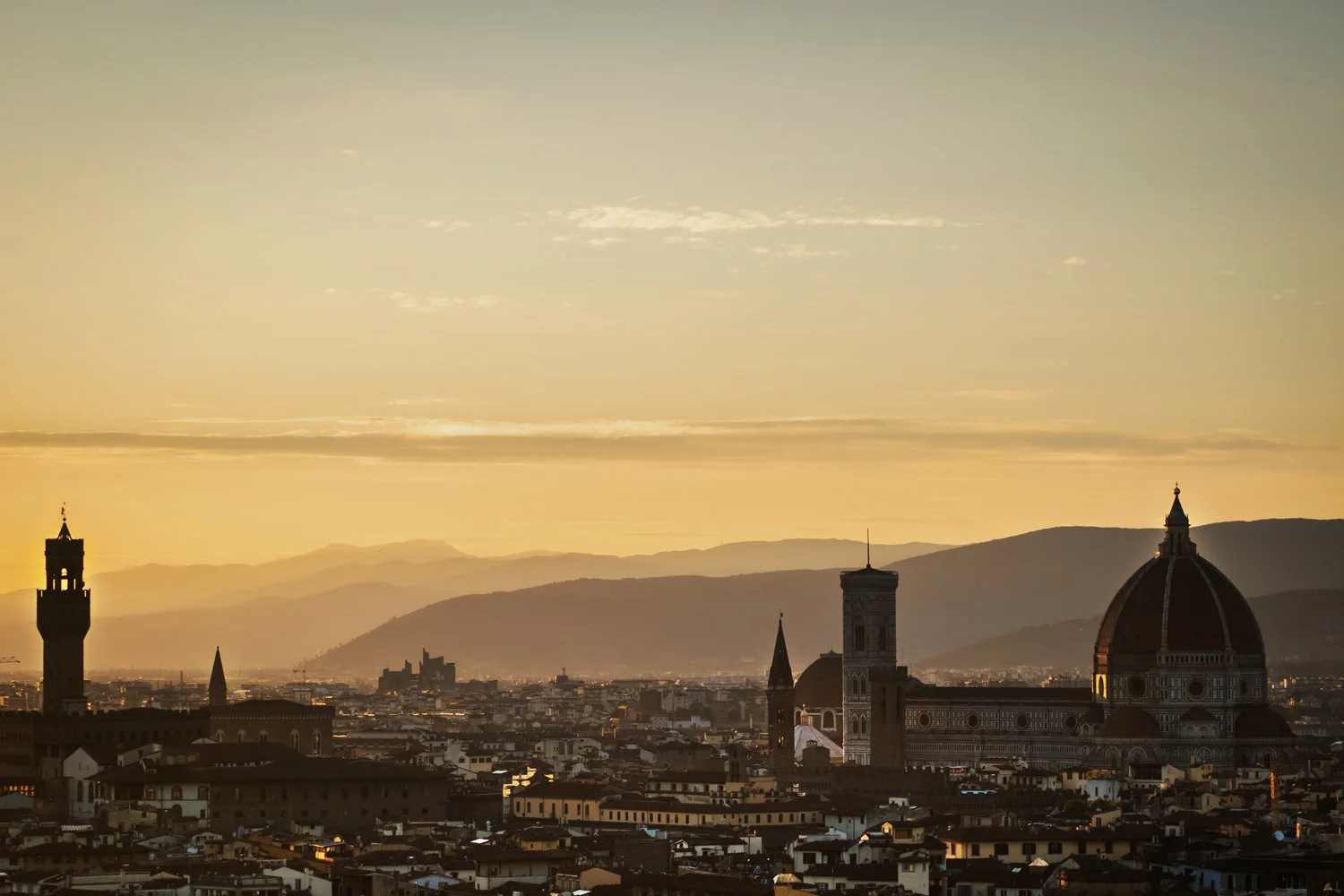Travelling to Italy – An 8-Day Trip
Part 2: Exploring the Timeless Beauty of Florence
After soaking up the magic of one of the world’s most fascinating cities, we boarded a train to Florence. Traveling by train in Europe is a joy—smooth, reliable, and surprisingly affordable. Within just a couple of hours, we arrived, checked into our hotel, and were ready to wander.
Florence isn’t a huge city, and that’s part of its charm. Almost everything is walkable. The best way to explore is simply by getting lost in its streets. Honestly, Florence feels less like a modern city and more like an open-air museum. At every corner, a piece of history waits to take your breath away—sometimes it’s a hidden courtyard, sometimes a centuries-old church, sometimes a statue you’ve seen in art books all your life.
For this post, I’ve divided my photos into three little stories:
1. Sunsets Over Florence
The light in Florence is unlike anywhere else. As the sun dips behind terracotta rooftops and domes, the sky sets the city on fire. I captured sunsets from different angles—across the Arno River, from Piazzale Michelangelo, and even just wandering the streets. Each moment felt like the city was telling me a different story.



2. Fashion in the Streets
Florence is a runway all on its own. Locals and travelers alike bring their own style, and together they create scenes you can’t find anywhere else. From chic Italian elegance to bold, colorful outfits, the streets are alive with fashion. Every photo feels unrepeatable—snapshots of personalities passing through the same timeless backdrop.
3. Statues & Monuments
And of course, Florence is the definition of history carved in stone. The statues, fountains, and monuments are not just art—they’re part of daily life. You’ll turn a corner and suddenly stand face-to-face with a masterpiece. This is why I say Florence is a museum without walls. It doesn’t just display history—it lives and breathes it.
4. Stickers & Graffiti
But Florence isn’t only about the classics. Its walls, poles, and corners tell modern stories too. Stickers and graffiti are everywhere—layered, colorful, and full of attitude. Some are funny, others are deeply political, reflecting the voices of activists and artists. They add a raw, urban layer to a city so often defined by its Renaissance treasures. It’s another dimension of Florence you rarely find in North American cities—a conversation between history and the present, written right on the streets.
Florence left me with a memory card full of images, but more importantly, it gave me a sense of wonder that’s hard to capture in words. Sometimes, when I scroll back through the photos, I still feel like I’m standing there, camera in hand, watching the city glow.
We left for Rome after 3 unforgettable days.


































